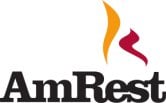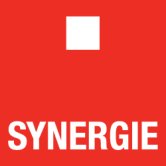- Chrudim
- Dětský domov se školou, středisko…
-
Benefity:
-
-
-
-
-
-
-
-
-
-
- ...
| Pracovní poměr | práce na plný úvazek |
|---|---|
| Smluvní vztah | jiný |
| Lokalita | Pardubice |
| Firma | Východočeské muzeum v Pardubicích |
| Kategorie | Věda, vzdělávání a sport, Sociolog / Socioložka |
| Hrubá mzda | 25.280 – 37.170 Kč |
Našli jsme pro vás ale jiné možnosti:
Předpokládaný termín nástupu: dohodou
Charakteristika vykonávané činnosti:
. archeologická památková péče – záchranné archeologické výzkumy, tj. komplexní terénní archeologická činnost, zajišťovaní odborných dohledů staveb, realizace a koordinace záchranných výzkumů menšího rozsahu
. zpracování nálezových zpráv
. administrativa spojená se záchrannými archeologickými výzkumy
Platové zařazení: 11. platová třída (odměňování podle zákona č. 262/2006 Sb., v platném znění a nařízení vlády č. 564/2006 Sb., v platném znění)
Vhodné i pro absolventy a OZZ.
V případě zájmu prosíme o zaslání strukturovaného životopisu a motivačního dopisu na emailovou adresu:
Kontaktní osoba pro případné dotazy:
Mgr. Tomáš Zavoral, DiS., zobrazit tel. číslo , e-mail přes
Skutečně chcete odeslat Vaši odpověď na stejnou nabídku opakovaně?





















Každý rok v práci vyplňujete růžové prohlášení, pojďte se na toto prohlášení podívat detailněji a zjistěte, jak správně uplatnit slevy na dani. Ukážeme vám, kde růžové prohlášení najdete. Finanční správa připravila růžové prohlášení jako formulář, který si vytisknete nebo vyplníte na počítači. Poradíme vám také, jak růžové prohlášení ukončit. K daním patří také potvrzení o zdanitelných příjmech, o kterém si řekneme více.

Zjistěte, jaký můžete mít přivýdělek na rodičovské dovolené, aniž byste ztratili nárok na rodičovský příspěvek. Pomůžeme vám rozhodnout se, jestli je lepší dohoda nebo OSVČ. O rodičovský příspěvek při zaměstnání nemůžete přijít, pokud splníte zákonem stanovené podmínky.

Přiblížíme si zkušební dobu, jak je dlouhá, jak ji lze prodlužovat. A co vše se dá dodatkem v pracovní smlouvě změnit. Připravili jsme pro vás i vzor dodatku k pracovní smlouvě. Podíváme se, jak vypadá pracovní smlouva na zkrácený úvazek.

Nahlásili jste pracovní úraz, zaměstnavatel potvrdil, že se o pracovní úraz jedná, s lékařem jste vyplnili potřebné dokumenty pro pojišťovnu. Víte, na co všechno máte nárok? Kdy zaměstnavatel nemusí odškodné vyplatit, nebo vyplatí jen část?

Dali jste si práci s vytvořením životopisu, průvodního a motivačního dopisu, vybrali jste tu správnou pracovní nabídku. Teď to nezkazit posledním krokem. Poradíme, jak připravit odpověď na inzerát na práci, jak odepsat na pracovní inzerát a na co si dát pozor.

Jaké jsou výhody registrace na úřadu práce, na co máte nárok? Jak je to se zdravotním a sociálním pojištěním? Na vše vám odpovíme!

Řekneme si vše o sick day, co to je, kdo určuje podmínky pro čerpání dne na zotavenou, jak je sick day proplácený.

Ukážeme si, jak psát motivační dopis k životopisu, který zaujme, a pomůže vám k osobnímu setkání u vysněného zaměstnavatele. Jaká má být u motivačního dopisu struktura? Zjistíte, jaký je rozdíl mezi motivačním a průvodním dopisem. Kdy stačí průvodní dopis, kdy musíte napsat dopis motivační?

Systémů pro podporu náborů, takzvaných ATS (anglická zkratka “Applicant Tracking System”), či jim podobných, najdete na současném trhu nepřeberné množství. Všechny tyto softwary spojuje společný cíl - vylepšit administrativní a náborové procesy ve firmách tak, aby byly rychlé, efektivní a ušetřily personalistům čas. Jak vybrat ten, který bude nejvíce vyhovovat požadavkům vaší firmy vám v tomto článku sice neporadíme, ale najdete v něm praktický přehled nejznámějších náborových aplikací či softwarů, který aktuálně trh nabízí.

Víte, že jsou situace, kdy vás zaměstnavatel musí ze zákona z práce omluvit, aniž byste si čerpali dovolenou? Jsou to tzv. překážky na straně zaměstnance nebo zaměstnavatele. Pojďme se podívat, kdy máte nárok na placené či neplacené volno a nemusíte čerpat dovolenou.
Pracovní portál JenPráce.cz provozuje